1859 Indian Head Penny Coin Value: How Much Is It Worth?
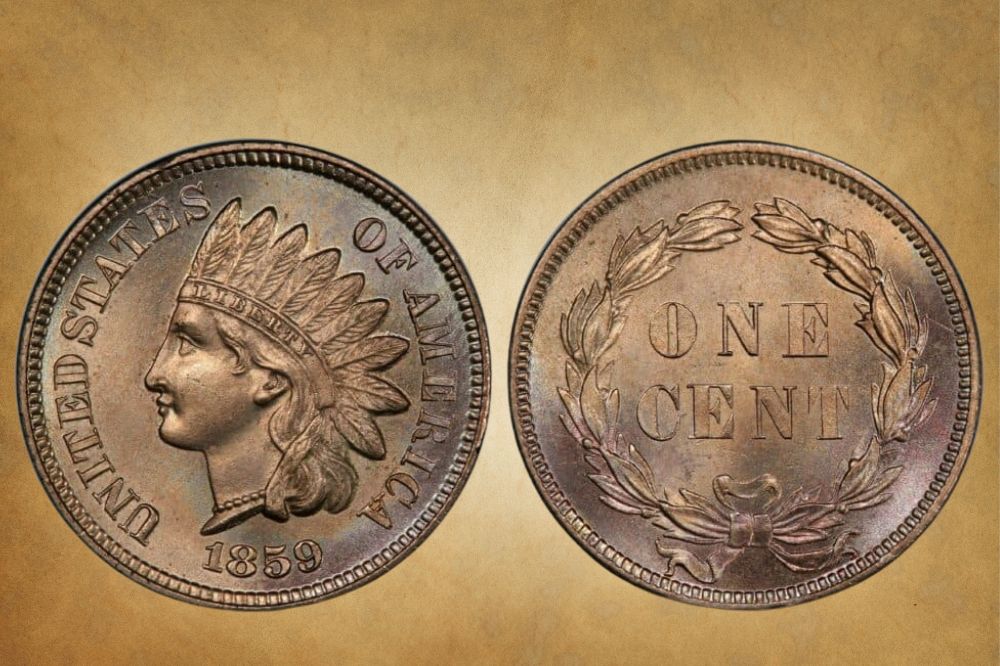
Are you excited about finding an 1859 Indian Head penny? Are you interested in collecting this coin?
Indian Head pennies are popular and highly collectible, especially ones minted in the flagship year of 1859.
While difficult to find in mint state, your 1859 Indian Head penny might be worth thousands of dollars given the high demand for these coins.
In this article, you will find out the 1859 Indian Head penny value. You will learn a bit about the Indian Head penny’s history, the coin’s features, errors, and of course, find out how much your 1859 Indian head penny is worth.
Let’s get started
1869 Indian Head Penny Value Chart |
||||
| Mintmark | Good | Fine | Extremely Fine | Uncirculated |
| 1859 No mint mark Indian Head Penny Value | $15 | $35 | $160 | $32,500 |
| 1859 Proof Indian Head Penny Value | – | – | – | $19,000 |
1859 Indian Head Penny Value Guide
In this section, you will find out how much your 1859 Indian Head cent is worth. As mentioned, only the Philadelphia mint struck the flagship Indian Head penny in 1859.
The two varieties of 1859 Indian Head pennies are:
- The 1859 No-mintmark Indian Head Penny
- The 1859 Proof Indian Head Penny
Any of these coins could be worth a lot depending on factors such as the grading, condition, and presence of errors. We will talk about errors in the section that follows. For now, let’s find out just how much is an 1859 Indian Head Penny worth.
1859 No Mint mark Indian Head Penny Value
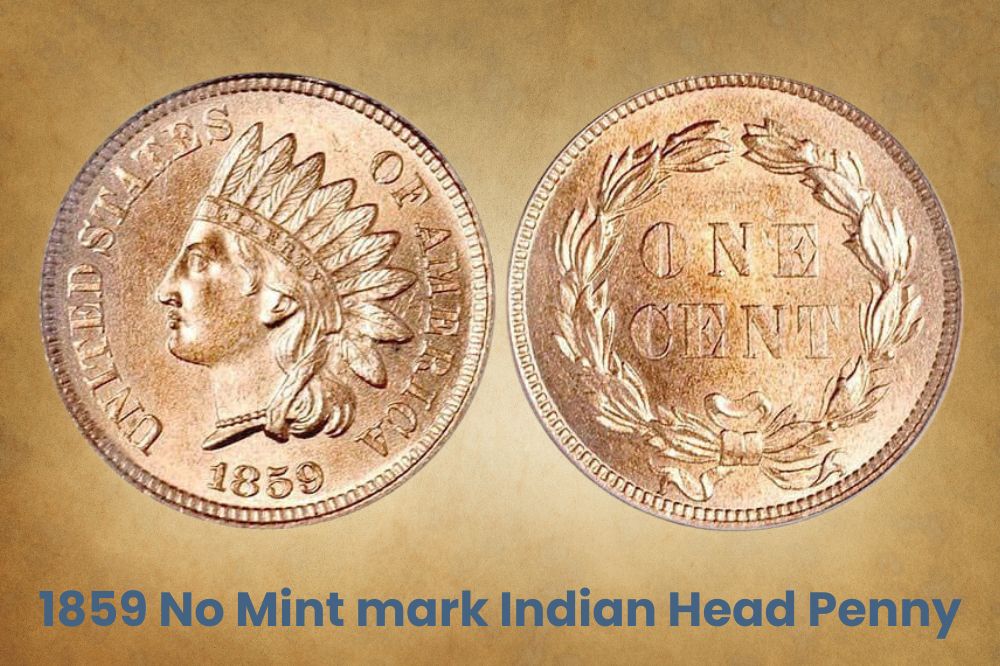
The Philadelphia mint struck a total of 36,400,000 Indian Head pennies in 1859, which was quite a large number of coins at the time. Having been minted in Philadelphia, these 1859 cents do not have a mintmark.
In 1859, the public received the new Indian Head penny quite well, and this coin also proved to strike better than the previous Eagle Cent.
Longacre was intentional about the design placement, making sure not to place the obverse and reverse designs directly opposite each other. This placement made it easier to insert the blank planchets on the die press, resulting in high-quality strikes.
Due to their high mintage, it is still fairly common to find an 1859 Indian Head cent in good condition, even one in circulation. Indian Head pennies from 1859 in gem condition are rare, but you can find a few examples of uncirculated mint cents.
Circulation grade 1859 Indian Head pennies are worth between $10 and $390. The big difference in value between these coins is that some circulation-grade Indian Head pennies from that year are still in pretty good condition, partly because these coins were well-struck, so you will find the design intact in most 1859 Indian Head pennies. On the other hand, these are really old pennies, and a good number will inevitably be worn out or damaged.
An 1859 Indian Head penny in mint, uncirculated condition can fetch up to $32,500. The most expensive Indian Head penny from 1859 in grade MS66 sold for $34,500 in 2012. As mentioned, most of these coins were released into circulation, and the few that collectors hoarded are rare and are, therefore, worth thousands of dollars.
1859 Proof Indian Head Penny Value
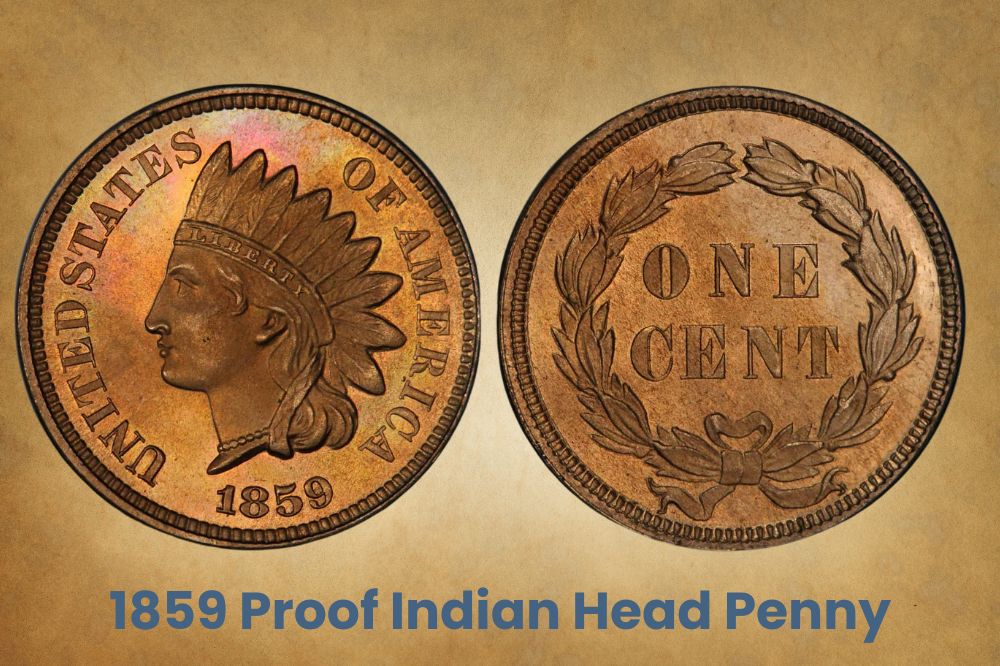
The 1859-proof Indian Head penny was the first of its kind in the Indian Head Cent series. An estimated 800 proofs were struck that year at the Philadelphia mint, but the number of surviving coins is significantly lower.
Proof coins from this year were and continue to be extremely popular given that it was a one-year design, after which the reverse design of the Indian Head penny changed in 1860.
Most surviving 1859-proof Indian Head pennies are graded PR (proof) 64. Those in PR65 are relatively scarce, and those graded PR66 are truly scarce, with fewer than two dozen existing examples. 1859 Indian Head proof pennies in condition PR67 are extremely rare, with only one or two known examples.
Most existing examples of this year’s proof have an excellent strike with cameo contrast and frosted fields. But, it is common to come across proofs with some spotting.
The Indian Head proofs from 1859 are worth between $1200 and $19,000 depending on cameo contrast, luster, and design brilliance. In other words, proofs in excellent condition will fetch more than ones with blemishes.
Related Posts: 16 Most Valuable Wheat Penny Errors
1859 Indian Head Penny Errors
Mint-related errors can increase the coin’s value depending on the type and extent of the error. Generally, 1859 Indian Head pennies were well-struck, but there would inevitably be a couple of errors due to the currency’s large mintage.
Knowing what to look for can help determine if your 1859 error coins are worth anything. Let’s look at the most common errors from this year.
1859 Die Crack Indian Head Penny Error
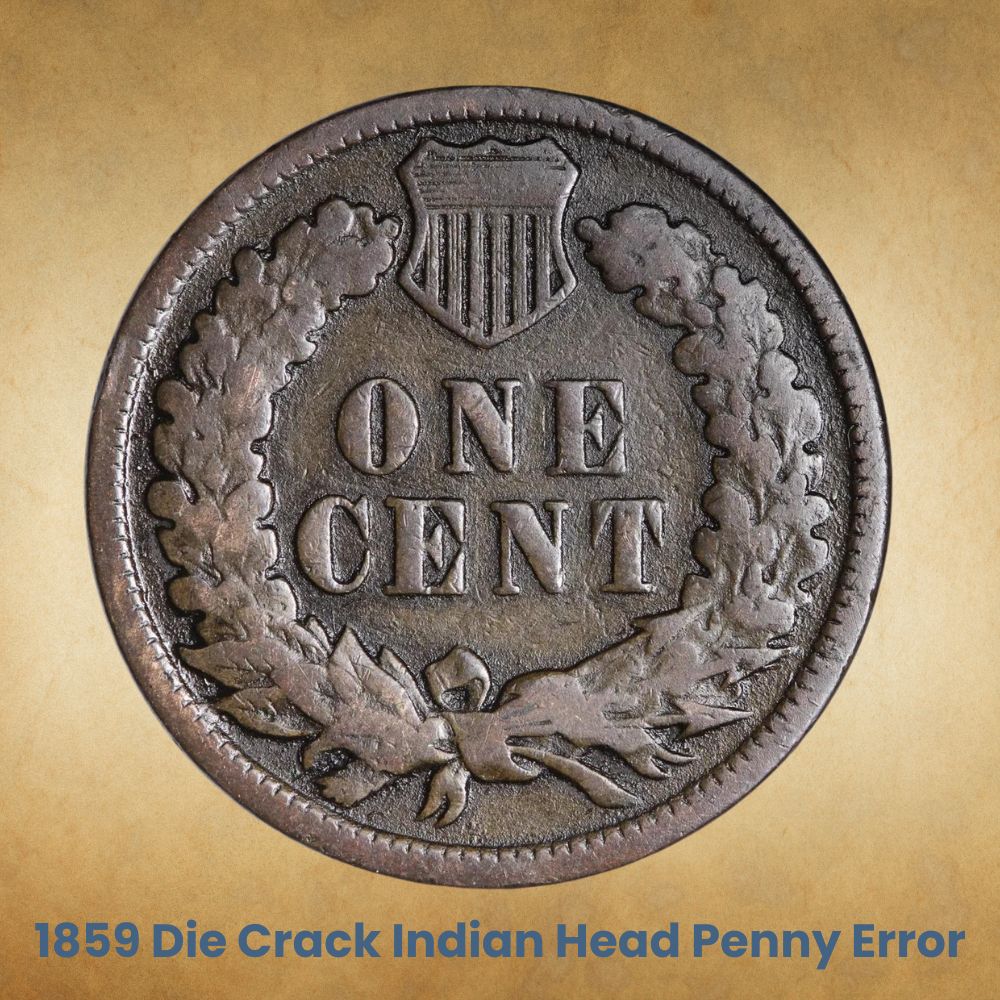
Die cracks are fairly common and typically found in coins struck by a worn die, usually at the die’s last state.
Examples of die cracks include antipodal, radial, shattered, and bi-level cracks. Bilateral and retained interior die break cracks are also common.
A single die would produce more than 200,000 Indian cents. The mints often used these dies until they showed complete wear or cracking, making die crack errors pretty common in Indian Head cents.
Indian Head cents with a die crack error can fetch between $20 and $40 or more, depending on the nature of the crack. Larger, unusual, and easily visible cracks are more valuable than smaller cracks that are hard to identify.
1859 Repunched Date Indian Head Penny Error
Many Indian cents from 1859 have repunched date errors because die dates were stamped on the coins by hand. This manual way of striking dates made repunched date errors inevitable and plentiful.
Extreme repunched date errors that one can easily see are more valuable than subtle errors. An 1859 Indian Head penny with a visible repunched date error is worth between $50 and $60. Subtle repunched date errors are worth significantly less, fetching $10 to $20.
How Color Affects The Value of Indian Head Pennies
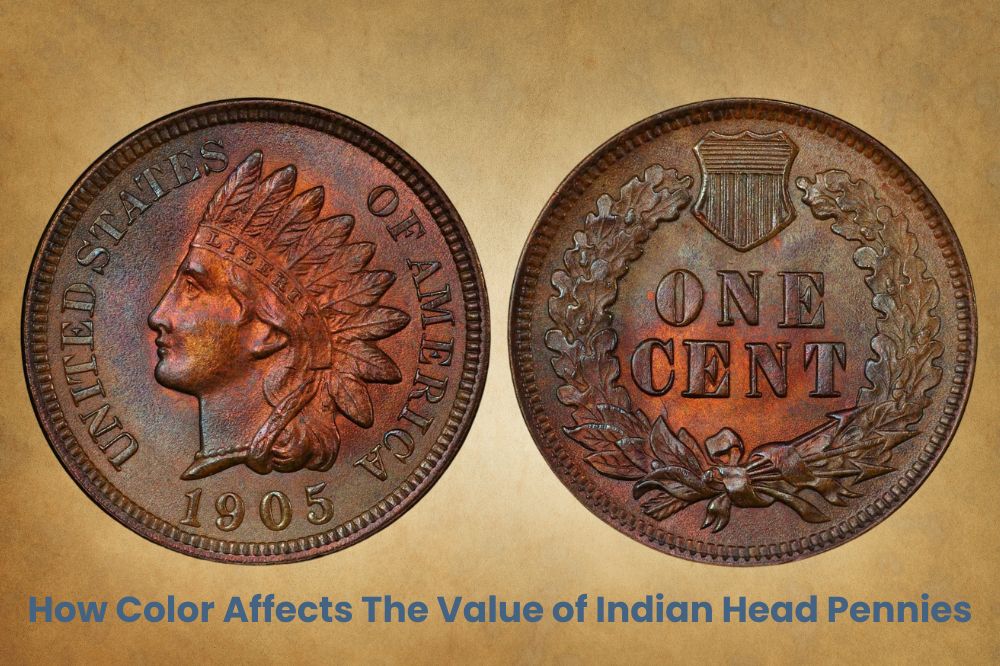
Indian Head pennies come in different colors, a feature that is especially noticeable among uncirculated coins. You will notice Indian Head cents in red, brown, and others that are a mix of brown and red.
Color is one determining factor for the value of an Indian Head penny, including the ones minted in 1859. Let’s look at the different coin colors.
- Red Indian Head Pennies
Indian Head pennies with a strong red coloring (RD) are the most valuable. Finding red Indian Head coins can be difficult, especially in circulated condition, given that copper turns green or takes on a darker hue as the coin ages.
Inevitably, the difficulty in finding them makes red Indian Head pennies quite expensive. It is common for a red Indian Head penny to be worth ten times more than a brown or red-brown penny.
- Brown Indian Head Pennies
Brown Indian Head pennies are relatively common. Do not be surprised to find this coin color in uncirculated mint condition!
A deep, shiny chocolate brown shade is more valuable on an Indian Head cent. Coins without spotting and those with an even color through and through are also sought-after among collectors.
Dull brown Indian Head cents with uneven color and spots will not fetch more than the face value.
- Red Brown Indian Head Penny
Red Brown Indian Head pennies have traces of both colors. Some coins may be primarily red and have some browning in some areas, while some may be brown with some red spots, such as around the date, letters, and fields.
How much brown or red is on the coin is the most important factor in determining the coin’s value. Generally, an Indian Head Penny that is neither wholly brown nor red is categorized as a Red-Brown penny.
Related Posts: 19 Most Valuable Lincoln Memorial Penny Worth Money
History Of The 1859 Indian Head Penny
The United States Mint first struck the Indian Head penny in 1859. Long-time Chief Engraver James Barton Longacre designed the penny, which features the image of Lady Liberty adorned in a Native American headdress. Legend has it that Longacre’s daughter was the inspiration behind the portrait on the coin, but this remains an unconfirmed rumor.
At the start of the 1850s, the high copper prices forced the Mint to reduce coin sizes, subsequently minting the small Flying Eagle Penny from 1856 to 1858.
The increase in copper prices also saw the Mint changing coins’ composition from 90% copper to an alloy of 88% copper and 12% nickel.
But, these new small coins stumbled into design problems almost immediately, forcing Mint Director James Ross Snowden to suggest to the Secretary of the Treasury to change the coin’s design.
Artists were invited to submit new designs for the newly proposed coin, and soon after, the Mint and other stakeholders approved a final design, which would be the Indian Head penny.
The Mint struck the Indian Head penny from 1895 to 1909 only at the Philadelphia mint. The penny comprises 88% copper and 12% nickel alloy and is significantly smaller than previous pennies. The 1859 cent remained in circulation for fifty years before the Lincoln penny replaced it.
Related Posts: 19 Most Valuable Wheat Penny Worth Money
How to Identify 1859 Indian Head Penny?
Now let’s look at the features of the 1859 Indian Head penny. Given that it is a highly collectible coin, it is important to know what to look for in an 1859 Indian Head cent to find out if it is worth anything.
The Obverse Of The 1859 Indian Head Penny
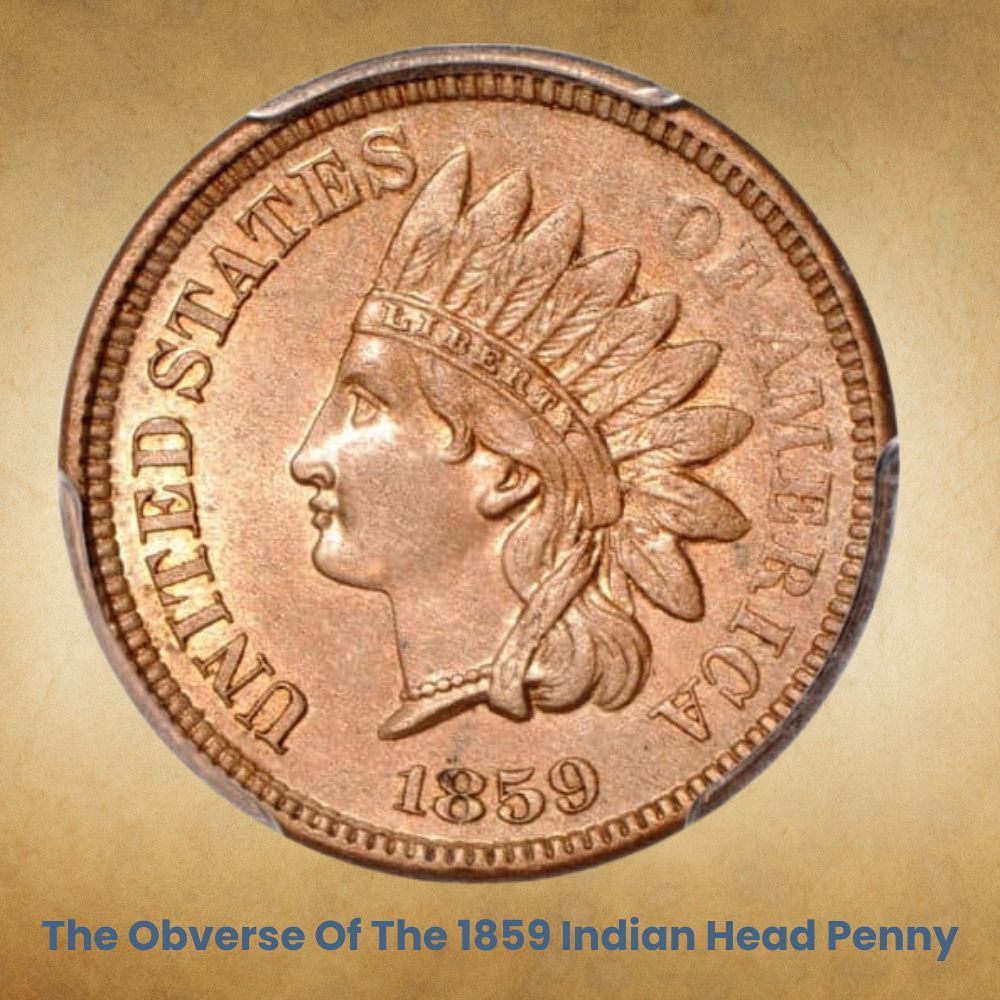
The 1859 Indian Head penny derives its name from the coin’s obverse design, which features the left-facing portrait of Lady Liberty wearing a Native American headdress over her flowing hair. A band with the letters LIBERTY is tied around her forehead and fastened at the back.
The words UNITED STATES appear around the coin’s left edge and OF AMERICA around the right edge. The date, 1859, is inscribed around the lower edge.
The coin’s collar has a reeded design all around.
The Reverse Of The 1859 Indian Head Penny
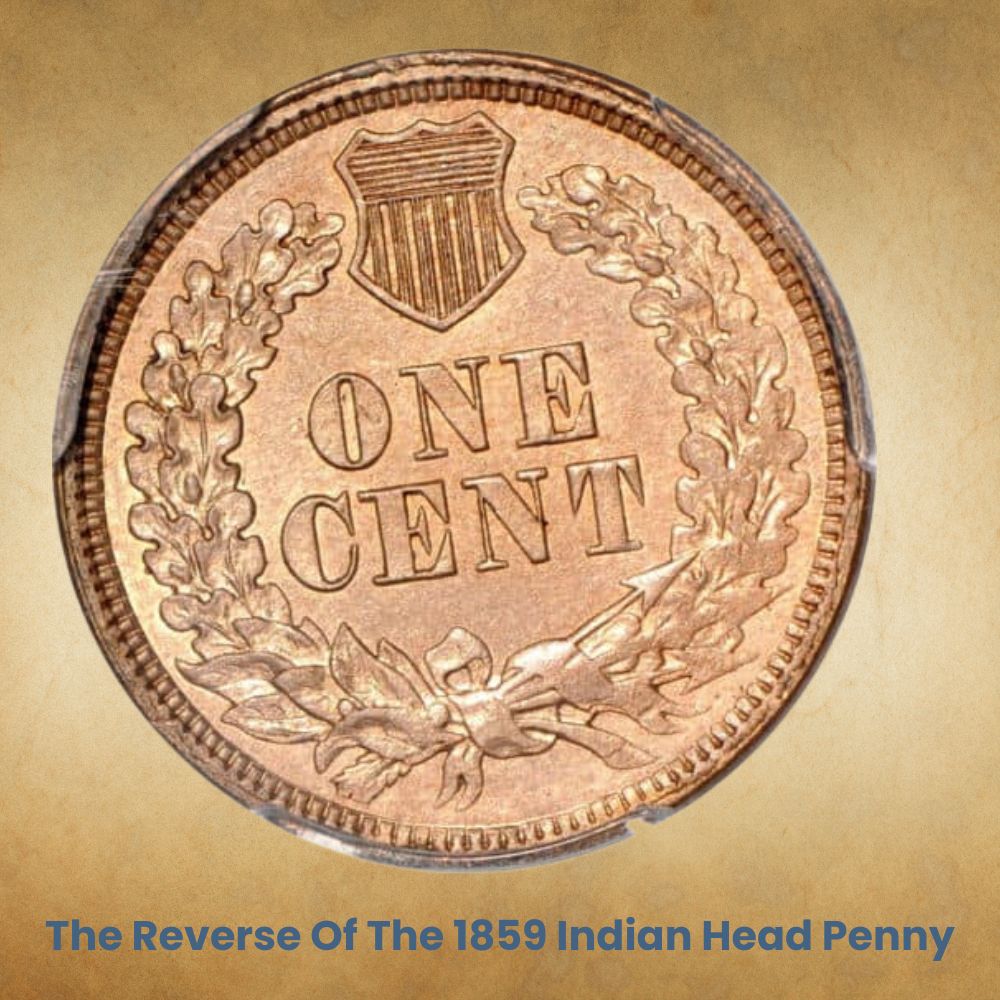
The reverse side of the 1859 cent features a simple design.
The coin’s denomination, ONE CENT, appears at the center and is flanked by a laurel wreath. This would be the only year the coin would feature a laurel wreath. Starting in 1860, the designer changed the reverse design to feature an oak wreath and a small shield at the top of the coin.
The lower ends of the wreath are tied together with a neat bow. The reverse is decorated with a reeded design around the coin’s inner edges.
Other Features Of The 1859 Indian Head Penny
The 1859 Indian penny’s metal composition is 88% copper and 12% nickel.
The coin weighs 4.67 grams, measures 19mm in diameter, and has a thickness of 1.5mm. It has a plain edge.
The 1859 Indian Head penny was minted in Philadelphia and had no mintmark.
Is an 1859 penny rare?
The Philadelphia facility minted more than 36 million Indian Head pennies in 1859, most of which were released into circulation. With such a large mintage, you can expect that 1859 pennies are not rare and can be found in pocket change, vaults, and drawers in circulated condition. Uncirculated, mint state 1859 cents are relatively rare but worth thousands of dollars.
How can you tell if an Indian Head Penny is real?
There are a few tell-tale signs of a fake coin that can help you determine if the one you have is real or not. Fake Indian Head pennies will have uneven or misaligned date digits. Also, check for natural toning and wearing of the coin. Ensure that the toning is real and even and no artificial spotting is applied on the obverse and reverse. It is a good idea to get the opinion of a professional coin grader if you doubt the authenticity of your Indian Head penny.
Is the 1859 penny the rarest Indian Head penny?
The 1859 penny is historically significant because it is the flagship cent in the Indian Head penny series. It was a one-year issue as the coin’s design changed the following year.
That said, it is not the rarest Indian Head cent; the 1877 Indian Head penny is the rarest, as only 852,500 were minted at the Philadelphia mint. Finding this cent in uncirculated mint condition is extremely difficult, making the 1877 Indian Head cent among the most expensive in the coin series.
